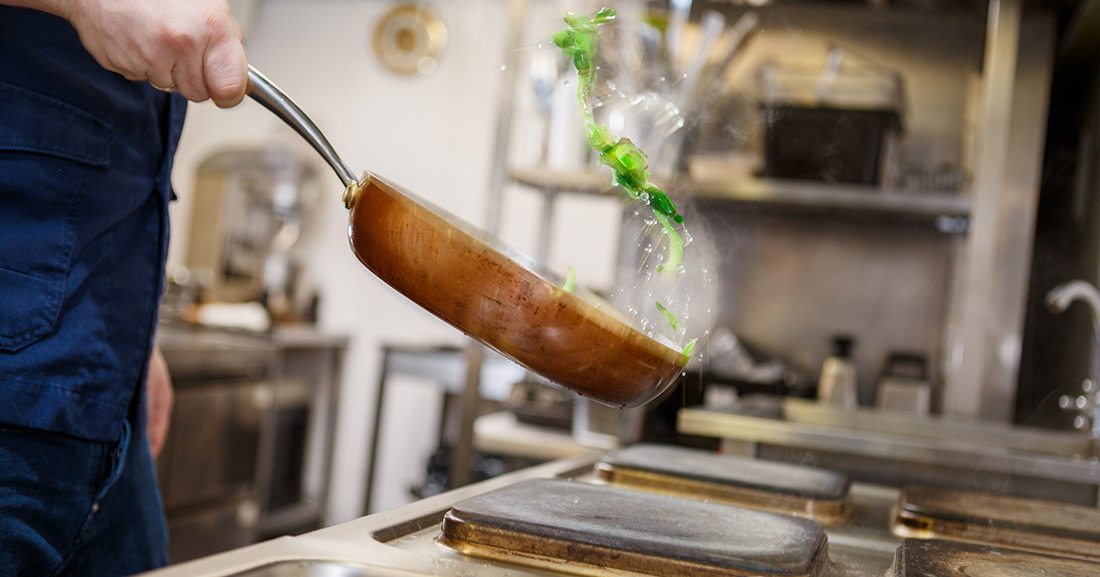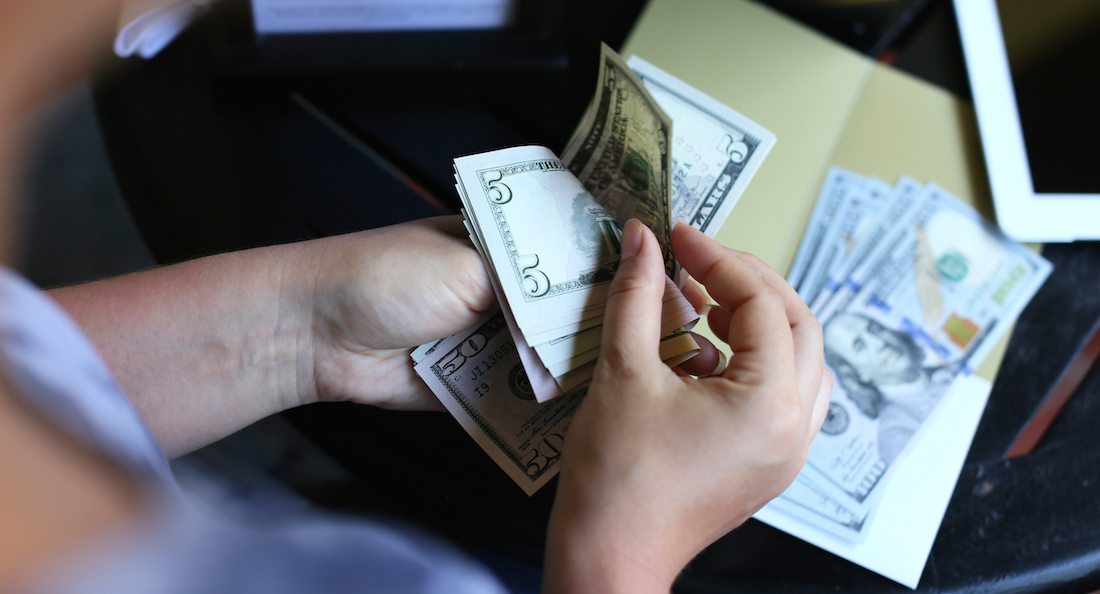Planning an office lunch can be a huge task. If you don’t know where to start, it can easily snowball into an ordeal that eats up tons of your time and even more of your company’s money. If you’re keeping an eye on the budget, or just trying to be more productive, here’s where to start.
1. Get One Entrée per Lunch
When offered two entrées, people want to try both. They’ll they take more food than they would when offered just one. The food will run out! Protect yourself by ordering 30% more of the entrées (but not of the side dishes). Of course, you’ll spend less money and waste less food if you stick with one entrée.
One exception: if you order the two entrées in very different amounts. Let’s say you want BBQ pork for your group of 50. It’s seldom safe to order just pork for a group, so you’ll want some BBQ chicken, too. You usually will be OK with pork for 45 and chicken for 10—just a 10% overage. But if you split the entrée evenly (25 pork/25 chicken), you’ll need the 30% overage. Ditto for a vegetarian option alongside a meat meal. It helps to label the smaller dish. A neat, hand-lettered sign saying that the chicken is for non-pork eaters will keep the nibbling down.
2. Order Locally & Seasonally
Whenever there’s an opportunity to reduce the number of things that can go wrong, take it. You’re generally better off with the caterer closest to the office. The food can arrive fresher, there is less opportunity for traffic delays, and delivery fees are often smaller.
Get the tastiest food—and make the caterer happy, which benefits you, too—by ordering foods that fit the season. Try turkey and cranberries in the fall, salad and fruit in summer, and hot pasta dishes in winter.
3. Get Written Confirmation
With any order, there’s a risk of miscommunication or error. It’s a good idea to have and review a written confirmation of your order. If something you order shows up wrong, or doesn’t show up at all, you’ll have a leg to stand on when you ask the caterer to make it right.
4. Leave it to the Experts
Once you’ve picked your entrée, it’s a great idea to let the caterer choose the sides and desserts. They know the most popular and memorable combinations. Plus, you’ll get the best deal. Since reputation matters a lot to caterers, you can trust they’ll make good choices.
Find caterers near you:
5. Save Money by Not Over-Ordering
You want enough food, but why waste any? Truth is, some offices over-order, and many caterers over-deliver. If you’re not sure how many people will be eating, come up with a likely range and order for the lower end of the range. If it’s Friday or summertime, you might be able to trim the headcount a bit further. A few guidelines:
- Side salads: With light entrées, order a side garden salad for just 1⁄2 to 2⁄3 of your headcount. If the entrée is large or already includes sides, reduce the side salad even further. Of course, if some guests are vegetarian or salad buffs, adjust accordingly.
- Chips: Not everyone eats chips, but some people eat two bags. Order for at least 85% of your headcount. Pretzels or baked chips are often appreciated, but check carefully; they can cost more.
- Other sides: When ordering pasta/broccoli/ potato salads by the pound, remember that some foods are much denser than others. A pound of potato salad will look much smaller than a pound of pasta salad, and it will not stretch as far.
- Desserts: Most people appreciate a treat, and many will thank you for offering smaller sizes. Request that brownies, bars, or cookies be cut in half, and order half as many. For cakes and pies that serve “x–y people,” calculate based on the higher number.
- Drinks: A gallon of tea or lemonade serves 10 people at lunch, except on the hottest summer days. At breakfast, a gallon of juice can serve 12 to 15 people.
6. Be Savvy About Tipping
If the delivery fee is less than $1 per mile, the driver is relying on tips. A tip of at least $1 per mile is tremendously appreciated. If your order is large (requiring multiple treks to and from the delivery van) or last-minute (requiring a scramble to fit you in), consider tipping as high as 10% or 15% of the food cost.
You’ll get the best service this way, which saves you time and hassle. Want to dive deeper on tipping? Check out our state-by-state analysis of average tipping trends for office catering.
7. Reflect and Follow-Up
Set yourself up for success at your next office lunch by jotting down some notes while the experience is fresh in your mind. Take some time to think about what you could’ve automated or made easier.
Take note of what the office liked, and what it didn’t. If a certain dish was a hit, you might keep that in the rotation.
Need catering for an upcoming meeting? Don’t put it off till tomorrow.









